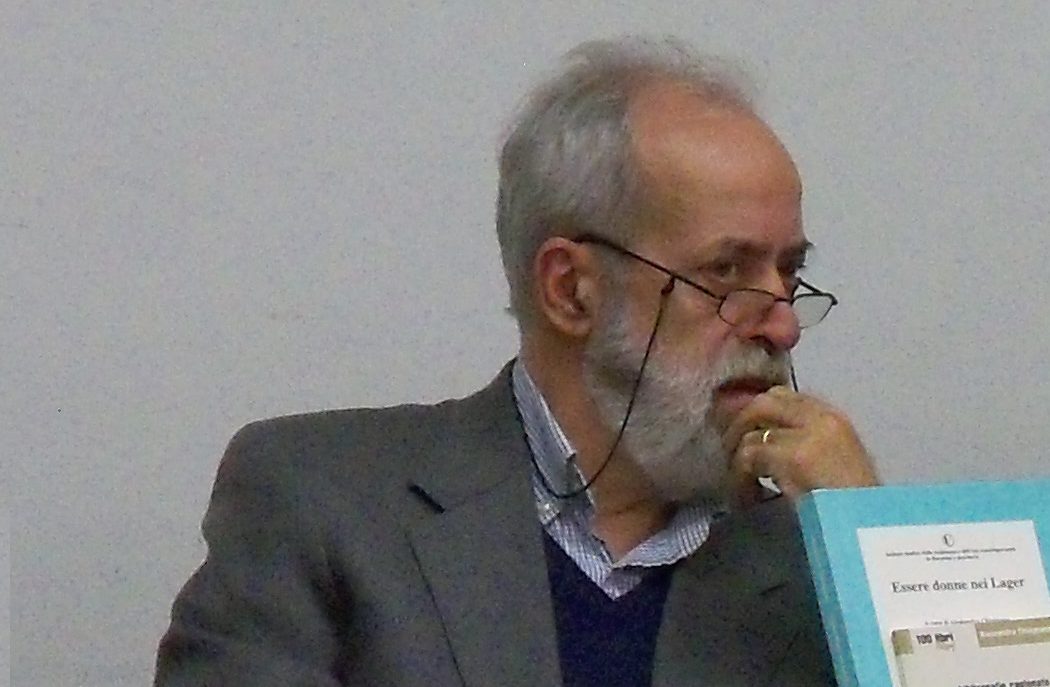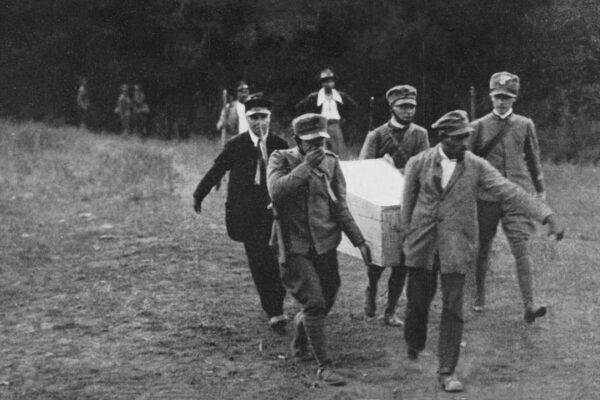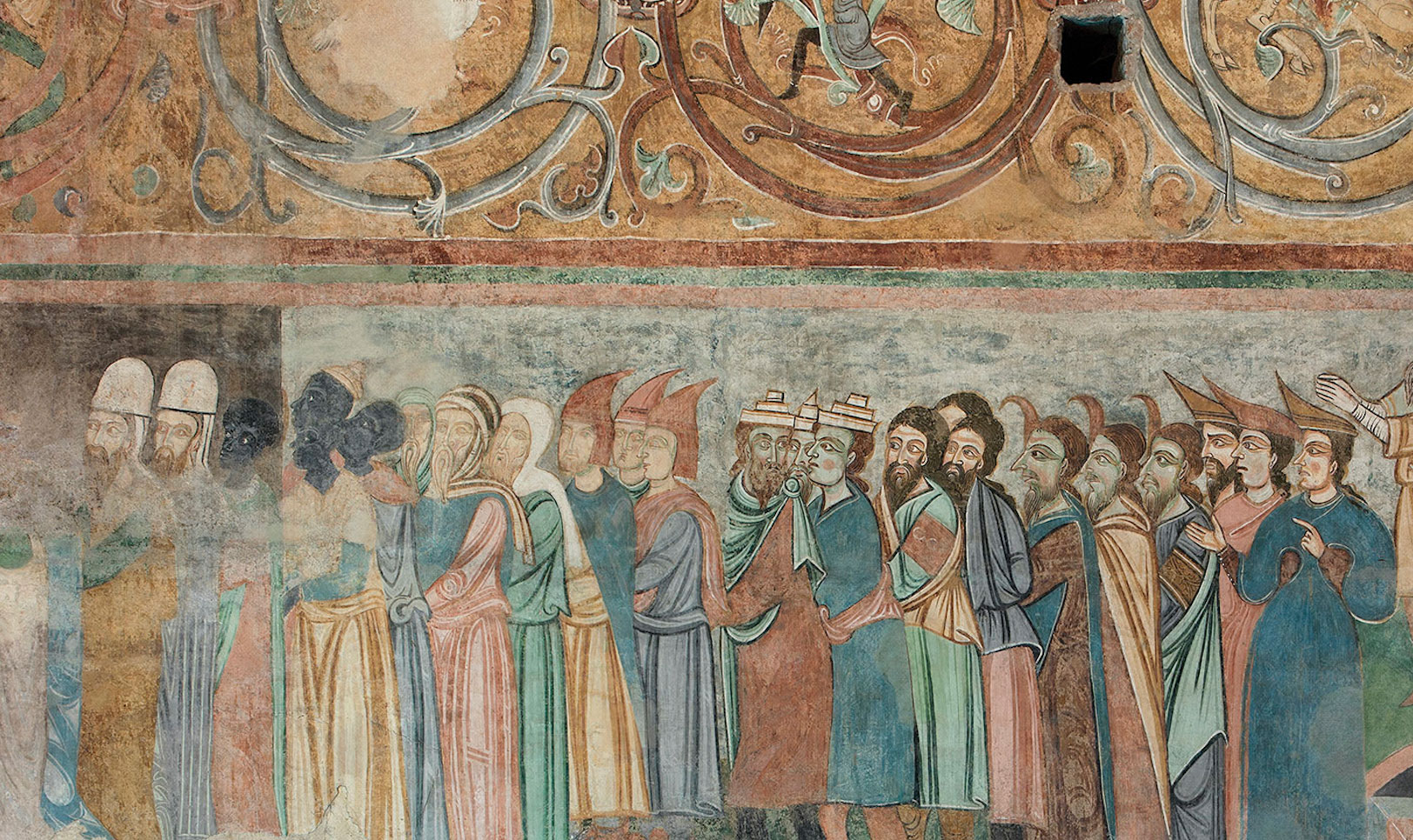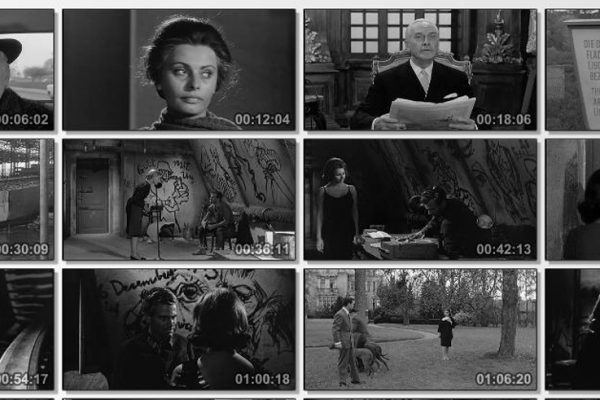Historian René Moehrle’s reviews Sarfatti’s classic for the German press.
When it first appeared in Italian, in 2000, Michele Sarfatti’s Gli ebrei nell’Italia Fascista. Vicende, identità, persecuzione (Einaudi) was instantly hailed as a seminal work. And over time it proved to be that and more, becoming the work of reference in the field. The book proposes a radical rethinking of Mussolini’s regime’s attitudes, actions and legislation toward the Jews. It singlehandedly takes apart the post -war narrative of Italian anti-Semitism under fascism as a mere result of Nazi Germany’s pressure and example.
In stark contrast, Sarfatti, through solid, in depth archival research and innovative thinking, outlines the independent genesis and specific characteristics of the Italian racist policies.
The book opens a new phase in the historiography of this period and provides a departure point for the pioneering work of a new generation of Italian historians.
The Nazi-Fascist attempt to exterminate European Jewry must be seen as a phenomenon that involves many countries and their interrelations, yet while historiography has pointed to the complexities and pitfalls of comparative studies, to understand it one must have access to exactly what happened in each of the areas involved.
While there has been impressive scholarship in English on Jews in Nazi Germany, until recently, the same was not true for Italy.
Although the book focuses on the persecution of the Jews, it also contributes in fundamental ways to our understanding of Italian society at large from the advent of Fascism in 1922 to its final defeat in 1945.
While Italian publishers translate a vast selection of what is published abroad in a timely fashion, Italian scholars often have to wait for years, if not decades, for their works to appear in other languages. Sarfatti’s book was made available in English in 2006, as The Jews in Mussolini’s Italy. From Equality to Persecution by Wisconsin University Press. And now, at long last, in German, as Die Juden Im Faschistischen Italien (de Gruyter, Berlin, 2014).
For anyone writing or researching Jewish persecution in Italy, German readers are a “special” audience. Significantly Primo Levi, in I sommmersi e i salvati, includes a chapter on letters he received from German readers of his books. It was imperative for him both to be read by Germans and to attempt to “understand” Germans.
One of the first reviews of Sarfatti’s book to appear in the German press begins poignantly with Endlich! (Finally!), thus stressing the delay that German readers had before access to a comprehensive and accurate account on what happened to Italian and foreign Jews in Italy during Fascism.
In a recent exchange, the reviewer, René Moehrle, a researcher at of the University of Trier, places the importance of the book in perspective.
Alessandro Cassin: What do you think is the main contribution of Sarfatti’s book and what impact do you predict its German translation will have among German scholars of the Shoah?
René Moehrle: Even though the persecution of Jews in Italy has been studied for more than 50 years, only in the last 25 years a self-critical Italian historiography began, stressing the autochthonous character of Mussolini´s state anti-Semitism. Sarfatti has been the most committed among Italian historians, a pioneer, who traced Mussolini´s anti-Semitic leanings as far back as the beginnings of his political career as a socialist agitator. The insistent preoccupation with racial theories, which led to state anti-Semitism, can be traced back to the first fascist government in 1922.
Sarfatti´s contribution, which rapidly gained the interest and support of major international scholars of Fascism, is a powerful rebuttal of the myth that Italians imported anti-semitism as diplomatic strategy and, on a popular level, did not support it. Fascist ideology and its leader may have been opportunistic but Fascist Italy was also an example for German National Socialism and inspired Fascist movements throughout Europe.
I hope that Sarfatti’s book will have an impact among older German historians and researchers, who still often link Italy’s Racial Laws of 1938 to Mussolini’s alliance with Hitler. It is time for a change of perspective, for the breath of fresh air carried by Sarfatti’s book, as well as by new historiography in Italy and abroad.
Sarfatti´s three-phase model overturned this cause-effect notion, which has now also been challenged by younger German scholars of fascist anti-Semitism.
AC: Sarfatti presents a three-phase escalation of Jewish persecution: attacks on Jewish equality (1922–1936), attacks on Jewish rights (1936–1943) and attack on Jewish lives (1943–1945). Thus he dispels the notion that there was no anti-Semitism in Italy prior to 1938 and that the racial laws had been adopted under Nazi pressure, following the German model. How does this affect the balance of responsibilities between the Italian Social Republic and Nazi Germany in carrying out the arrest and deportation of the Jews from Italy and Italian territories?
RM: Historians like Enzo Collotti, Lutz Klinkhammer and Brunello Mantelli, just to mention a few, who have studied in detail the collaboration between the RSI and the Nazis between 1943-1945, have raised the question as to why there was not an equivalent to the Nuremberg trials in Italy. The Repubblica Sociale Italiana (RSI) was founded in 1943, after German troops had occupied almost all of Italy, capturing and deporting more than 600.000 Italian soldiers. Without his own army, Mussolini as head of the RSI, was dependent on his military ally. He was now politically autonomous, no longer dependent in any way on the King or the Pope. His companions were diehard fascists, often radical and overtly anti-Semitic. The deportation of Jews from the territories of the Italian Social Republic was decided with the support of the Italian fascists and repeated requests by Himmler and the SS. Sarfatti estimates that of the 33.000 Jews still residing in Italy in 1943, about 8.000 were deported to German concentration camps, and ninety-four percent of them did not survive. Their identification, arrest and deportation would not have been possible without strong anti-Semitic feelings among Italian fascist leadership, as well sectors of civil society.
AC: Sarfatti argues that prior to 1943, when the physical violence against the Jews began, Italians had done nothing to oppose the racial laws. When arrests and deportations began, the responses were mixed. As Sarfatti puts it, behind each Jew who was saved there was an Italian non-Jew who helped and for each Jew that was arrested there was and Italian non-Jew who collaborated. Without the help of Italian records, collaborators and informers, the Nazis could not have identified Italian Jews…
RM: In my book on the persecution of Jews in Trieste under fascism and national-socialism from1922-1945, I argue that Trieste — at once the third largest Jewish community in Italy, and a fascist stronghold— played a major role for elaboration of Italian anti-Semitic laws. It was there that the first “Jew-list”, a test-runner for the “Jewish-census” of 1938 was created. All Italian Jews were registered in continuously updated lists, held by state institutions such as the Department of Racial Affairs (Demorazza) or the five “Centers for the studying the Jewish problem”. In Trieste these detailed lists were handed over to the German occupiers by the Italian head of the “Center for studying the Jewish problems”, a notorious anti-Semite, who continued work after September 1943. Other anti-Semites, both civilians and part of the Fascist establishment, denounced local Jews for money, vendetta or ideological belief. Jews in Trieste were imprisoned and even killed in the Risiera di San Sabba, ran by Odilo Globocnik, the only Nazi concentration camp in Southern Europe with an incinerator. Of the 754 Jews captured Jews in Trieste only 39 survived the Shoah. In light of Sarfatti´s estimated total number of Jews deported from Italy, what occurred in Trieste can be viewed as somehow exemplary.
AC: One of the recurrent difficulties in studies of Jewish persecution is the lack of the victims’ “voice”. Sarfatti indicates how the language and legal formulation of some of the anti-Semitic legislation was meant to blackmail the victims into silence: “The … terms offered to Jews will be canceled or aggravated according to the attitude the Jews will take against Fascist Italy (from Dichiarazione sulla razza, Gran Consiglio del Fascismo, October 6, 1938). Did the Nuremberg Laws use similar devices?
RM: Neither the Nuremberg, nor the Italian anti-Semitic laws used exactly the kind of blackmail devices formulated by the Gran Consiglio del Fascismo, shortly before “declaration about race” merged into the Italian racial laws. In Nazi Germany too, the racial laws admitted some exceptions, though they were motivated with different reasoning and different linguistic formulation. However, these formal parallels should not hide the fact that consequences of the laws in National Socialist Germany with few exceptions lead to deportation and death. The legislators felt a need for some exceptions to the discriminatory laws since they were unable to come up with an unequivocal definition of the biological difference between the Jews and the rest of population. The exceptions both in Germany and in Italy fortunately allowed at least a very small minority of Jews to avoid persecution.
AC: Unlike Germany, post-war Italy did not enforced a process of de-fascistization among government and civil servants. This allowed the creation of a narrative – presented in films, fiction and popular culture— celebrating the Resistance as the unifying myth, without having to confront the troubling legacy of the Holocaust. According to this narrative, Italians were partisans, good-hearted bureaucrats, or victims themselves, while the villains were always the Nazis.
I would like to know how this Italian self-representation was perceived in Germany…
RM: From my perspective, as a 37-year-old historian, I believe that in fact the interpretation of Italy’s role that you are referring to dominated German historiography too. This clearly had to do with the cold war, and with a political use of the Fascist past. Undoubtedly Italy was thought of as the failed ally, especially among German historians. This perspective was reinforced by the heritage the First World War, when Italy, switching alliance from the Central Powers to the Entente, was regarded as a traitor. In 1943 these stereotypes were combined with comparable accusations, blaming the Badoglio government of treason for its military alliance with Eisenhower.
In contrast to Germany, where no real (armed) resistance took place, in Italy the Resistance movement was turned into a myth especially after the end of the cold war. That was primarily an Italian phenomenon. In recent decades there has been a considerable development in the international historiography about fascism, which became more critical thanks to, among others, to Sarfatti.
REVIEW
Michele Sarfatti, Die Juden im faschistischen Italien. Geschichte, Identität, Verfolgung, de Gruyter, Berlin, 2014. Translated by Thomas Vormbaum and Loredana Melissari
Finally! More than 25 years after its first appearance, Michele Sarfatti’s research into the persecution of Jews in Fascist Italy is now available for the first time in German.[1]
Sarfatti, an Italian historian and director of the Documentation Center for Jewish History (ACDEC)[2] in Milan, began the work back in 1988 with a series of critical essays on Mussolini’s state-sanctioned anti-Semitism; that year marked the 50th anniversary of the Italian racial laws, and Sarfatti strove to wake Italian historical research up from its extended slumber.[3]
The trivializing opinion that had prevailed for decades—that Mussolini was not an anti-Semite and had merely acted under pressure from Hitler— began to crumble. As early as 1978 the work of Israeli historian Meir Michaelis had shown that the Nazi leadership in Berlin had no influence on Italy’s enactment of its “racial laws,” and Michaelis’s work was reinforced a year later by Rainer Pommerin’s analysis of records from the Foreign Office.[4] Nevertheless, research into anti-Semitism under Mussolini remained relatively dormant until 1994, when Sarfatti published Mussolini contro gli ebrei. Cronaca dell’elaborazione delle leggi del 1938 (“Mussolini Against the Jews: The Development of the 1938 Racial Laws”).[5]
Its original and well formulated thesis that Italy had its very own homegrown brand of anti-Semitism has since become a widely accepted opinion among researchers of Fascism, but the aforementioned aspects remain rather neglected. The present translation of Sarfatti’s book, first published in Italian in 2000 and reissued in 2007, brings his work to German speaking readers—provided those interested in Italy are actually ready to read it.[6]
The book is divided into two opening and three main chapters, beginning with the societal emancipation of the Jews in Italy in the late nineteenth century. The Introduction is followed by an in-depth analysis of increasing anti-Semitism during Benito Mussolini’s reign from 1922 to 1938, when it became officially sanctioned by the state.
The work also deals with the Repubblica Sociale Italiana (the Italian Social Republic or RSI) and the radicalization of Jewish persecution during the so-called Republic of Salò and German occupation of Italy from 1943 to 1945.
In the first chapter, Sarfatti shows how Italian Jews—who were emancipated, patriotic, and highly assimilated—experienced Mussolini’s rise and the establishment of the Fascist regime as full citizens with equal rights. Just how diverse and deeply rooted Italian Jews were is reflected in the fact that the country had several Jewish senators and ministers, such as Prime Minister Luigi Luzzatti (1910–11), and that six founding members of the Fascist movement were Jewish. And despite the fact that up until 1922 there had been about 600 Jewish members of the 250,000-member Fascist Party (PNF), ever since the party’s founding in 1921 there had also been an anti-Semitic wing.
The rather formal second chapter, supplemented by two maps and five tables, provides detailed information on the geographical distribution of the roughly 58,000 Jews living in Italy in 1938, outlining their population growth as well as economic status and occupations.
Chapters three to five form the core of Sarfatti’s work, and present the chronology, methodology, and consequences of Jewish persecution under Mussolini in three distinct, cited phases: attacks on Jewish equality (1922–1936), rights (1936–1943) and lives (1943–1945).
Sarfatti compellingly connects the end of Jewish equality in Italy with Mussolini’s central role in it. Early in his political career—as a socialist, no less—the future “Duce” garnered attention with anti-Semitic slogans. In June 1919, shortly after the foundation of Fascism, his newspaper Il Popolo d’Italia blamed Jewish bankers in New York and London for the Russian Revolution, claiming the conspirators had aimed to take revenge on the “Aryan race.” With the government takeover in 1922, Mussolini was ambivalent regarding the “Jewish question,” and officially denied any anti-Semitism in Italy.
Unofficially, however, he further increased pressure on the nation’s Jewish population with the help of the Church and establishment of Catholicism as the national religion. Sarfatti vividly portrays the continuity and gradual increase of anti-Semitism in Italy. His chronology of the years between 1922 and 1936 shows how Mussolini used press campaigns, regulations, and laws to enforce discrimination, link religious stereotypes to conspiracy theories, and ultimately categorize Jews as a separate human “race” under Fascist rule and colonial policy.
In the fourth chapter Sarfatti concisely describes the chronology of events and state initiatives culminating in the legally sanctioned persecution of the Jews. Beginning in 1936—albeit with a primary focus on 1938, the year the anti-Semitic “racial laws” were decreed—Sarfatti analyzes Italy’s official policy of anti-Semitism. Among the laws adopted between September 1938 and October 1942 were the “Provvedimenti per la difesa della razza nella scuola fascista,” measures for the “defense of the [Italian] race” in Fascist schools, issued September 5, 1938.[7]
It forbade Jews from professional occupation (Article 1), dissolved existing (and previously binding) labor relations (Articles 3 and 4), and expelled Jewish students from public or semi-public schools (Article 2). Two days later came the “measures against foreign Jews,” officially forbidding Jews from immigrating to Italy, which meant that, up until May 1940, foreign Jews could enter the country only for profitable business reasons or while “in transit” to Palestine or America.[8]
The core decree of the anti-Semitic “racial laws” came into effect on November 17, 1938, with the “Measures for the defense of the Italian race.”[9] This socially isolated Italian Jews from the rest of society, as its seven articles included, among other things, a ban on “Marriage between Italian citizens of the Aryan race with people . . . of any other race,” making it and many other acts punishable offenses. Furthermore, it excluded Jews from military service and established government limits on their ability to own private and commercial property. Due to the key criterion of genetic ancestry in defining who was a Jew, Sarfatti concludes that the main reference point for this classification was “undoubtedly biological racism” (p. 175ff).
The fifth and final chapter deals with the German occupation of Italy, beginning in September 1943 with the persecution of the roughly 33,000 Jews remaining in Italy, such as the SS’s ransacking and arrest of 56 Jews at Lago Maggiore and the raids carried out in Rome, Florence, and Siena, which led to the deportation of 2,000 Jews. Mussolini’s RSI, a “radical Fascist” state created in late September, reconciled its views of the “Jewish policy” through joint action with its “allies,” according to the agreements made between the Italian authorities and the German Reich’s Security HQ (Reichssicherheitshauptamt) Sarfatti cites.
Nevertheless, various local Fascist authorities arbitrarily and successfully opposed German pressure to hand over all arrested Jews. In November all previously decreed laws were restored in Fascist Italy, and Jews were officially declared enemies of the state. Soon thereafter a decree issued by the Interior Ministry called for the arrest of all Italy’s Jews, “in anticipation of their being sent to concentration camps specially set up for this purpose.”[10] Sarfatti estimates the total number of Jews deported from Italy, of whom 94 percent did not survive, was approximately 8,000—a number more recent research has since increased to about 8,600.
Endnotes
This work may be copied and redistributed for non-commercial, educational purposes, if permission is granted by the author and usage right holders. For permission please contact h-soz-u- kult@h-net.msu.edu. English translation copyright © 2014 Alta L. Price.
[1] This is a review of the German edition of Michele Sarfatti, Gli ebrei nell’Italia fascista. Vicende, identità, persecuzione (Turin: Einaudi, 2000), published in English as The Jews in Mussolini’s Italy: From Equality to Persecution, trans. John and Anne C. Tedeschi (Madison: University of Wisconsin Press, 2007).
[2] ACDEC Documentation Center: Archivio della Fondazione centro di documentazione.
[3] Michele Sarfatti (ed.), “1938 le leggi contro gli ebrei,” La Rassegna Mensile di Israel 54 (1988): 13–18; Sarfatti, “Il razzismo in Italia. Prime reazioni del fuoriuscitismo italiano in Francia,” Qualestoria 16 (1988): 5–9; Sarfatti, “Il lavoro negato. Dati e spunti di riflessioni sulla normativa antiebraica in Italia,” Qualestoria 17 (1989): 33–42.
[4] Meir Michaelis, Mussolini and the Jews: German-Italian Relations and the Jewish Question in Italy 1922–1945 (London: Clarendon Press, 1978); cf. Rainer Pommerin, “Rassenpolitische Differenzen im Verhältnis der Achse Berlin-Rom 1938–1943,” Vierteljahrshefte für Zeitgeschichte 27 (1979): 647–660.
[5] Michele Sarfatti, Mussolini contro gli ebrei. Cronaca dell’elaborazione delle leggi del 1938 (Turin: Silvio Zamorani, 1994).
[6] Michele Sarfatti, Gli ebrei nell’Italia fascista.
[7] “Provvedimenti per la difesa della razza nella scuola fascista” (decree affecting Italian schools), September 5, 1938; cf. “Istitutzione di scuole elementari per fanciulli di razza ebraica” (decree affecting Italian elementary schools) September 23, 1938; the revised version, “Integrazione e coordinamento in unico testo delle norme già emanate per la difesa della razza nella scuola italiana,” issued on November 15, 1938, was even stricter.
[8] “Provvedimenti nei confronti degli ebrei stranieri,” September 7, 1938.
[9] “Provvedimenti per la difesa della razza italiana,” November 17, 1938.
[10] “Erlass des Innenministeriums an die Chefs der Provinzen,” November 30, 1943; cf. Sarfatti, Die Juden im faschistischen Italien, 286.









